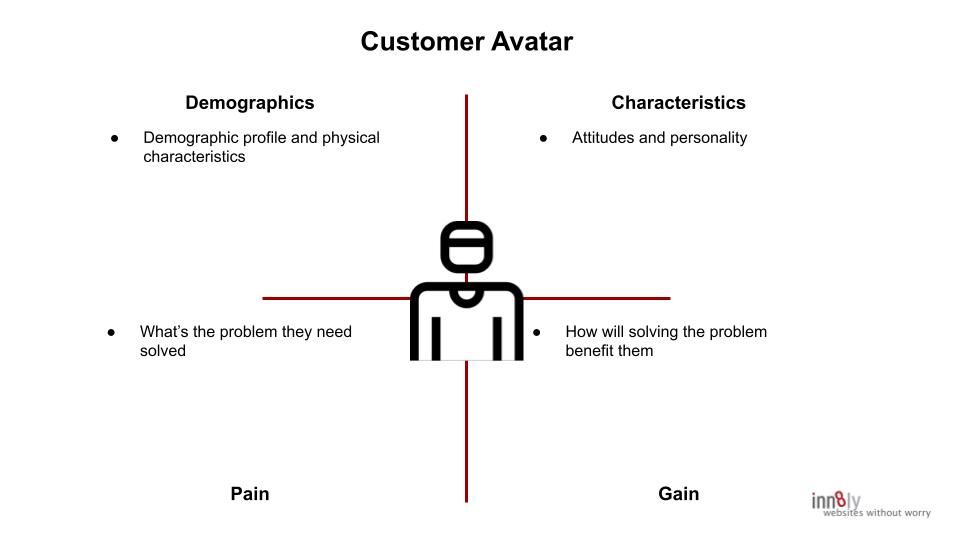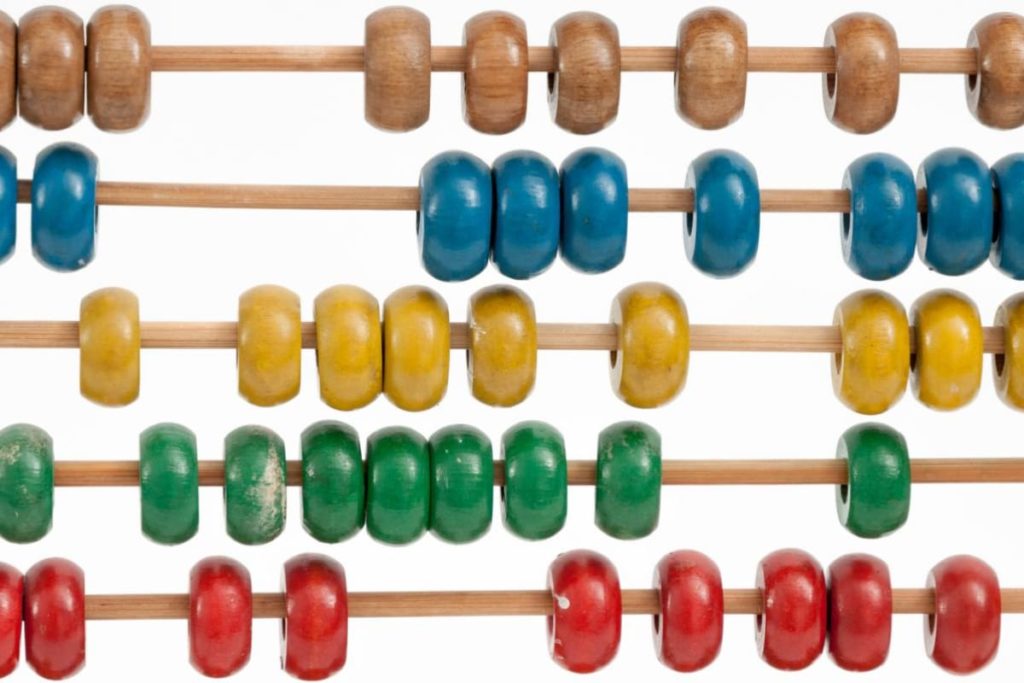Your cart is currently empty!

When to Hire a Fractional CMO for Your Team
I want to tell you how a fractional CMO supported John’s journey from stalled to vigorous growth.
John is a successful business owner, likely similar to you, who built his company from the ground up. His expertise and hard work took the business to impressive heights, but lately, growth has slowed.
Frustrated by stagnant revenue, John knew something had to change. Updating their marketing seemed like a viable option, but he wasn’t a marketing expert—his knowledge was in product development and operations. John decided to hire a boutique marketing agency, hoping their expertise would reignite the business’s momentum.
The agency delivered on its promise of well-executed marketing campaigns. The execution was polished, the social media presence grew, and the website looked great.
But despite all the activity and improvements, the needle didn’t move. Sales remained flat, and John couldn’t understand why. The marketing efforts were professional and on-point, yet they weren’t translating into business growth.
John wasn’t a fan of the definition of insanity, so he asked around to see if any of his friends and colleagues had a suggestion. Several mentioned that using a more senior marketing consultant helped them make the changes that made a difference. One suggested that John contact Kyle, who supported businesses like John’s as a Fractional CMO.
John was intrigued but also a little confused. He asked his friend to explain what a Fractional CMO is.
His friend told him that a Fractional CMO is a seasoned marketing expert who works with businesses part-time or on a short-term basis. They bring the same strategic know-how as a full-time Chief Marketing Officer but without a big salary or long-term commitment. It’s a flexible way for businesses to get the high-level marketing leadership they need to grow without taking on the costs of hiring a full-time executive.
Based on this feedback and the recommendations of people he trusted, John reached out to Kyle and set up a meeting. Kyle asked John to bring examples of what they were doing, and he asked John to assess his customers to determine which customers were driving the majority of the business’s revenue.
The meeting progressed in a surprising way. John expected Klye to focus on the marketing examples he brought with him, but this isn’t what happened. Kyle started the conversation by asking John what he learned about his current customers. John’s initial reaction was to push back on this.
“I need new customers. Why are you asking about customers I already have?”
Kyle leaned forward, his expression thoughtful but firm. “John, I understand why you’d want to focus on attracting new customers, but here’s the thing: successful marketing is built on a strategic foundation, and that foundation starts with understanding your best customers—the ones you already have.”
John frowned, still not entirely convinced. “But if I want to grow, don’t I need to focus on bringing in more people? Why does it matter who’s already buying?”
Kyle smiled. He had been anticipating the question. “It matters because most businesses, including yours, generate the majority of their revenue from a minority of their customers. This is where Pareto’s Principle comes into play—roughly 80% of your revenue likely comes from just 20% of your customers. If we can identify who those top customers are, and understand what makes them choose your business over others, we can craft marketing strategies that attract more customers just like them.”
John sat back, considering Kyle’s words. “Okay, that makes sense. But how do we actually figure out who these best customers are and what they want?”
“That’s where customer avatars and buyer’s journey maps come in,” Kyle explained. “A customer avatar is a detailed profile of your ideal customer. It’s based on data and insights drawn from your existing customers. It includes not just demographic information but also their characteristics, the challenges they face, and their buying motivations.”
John responded, “So you are describing my best customers in the aggregate?”
“Exactly! But this is only half the job.”
“Once we have these avatars, we need to map their journey. This will be the path they take from not being interested to realizing they have a need, to considering their options, prospecting for a solution, and finally deciding to buy. Understanding this journey is crucial because it helps us know where and how to reach them with a message that supports where they are in their journey.”
“By supporting your prospects where they are in their journey you are using marketing to bring value and build trust with prospect before they become your customers.”
John was starting to see the value in Kyle’s approach. “So, you’re saying that by really understanding my best customers and how they make buying decisions, we can create marketing that actually resonates with them, instead of just throwing stuff at the wall to see what sticks?”
“Exactly,” Kyle said with a smile. “Your marketing agency wants to do good work, but in the absence of strategy all they can do is make marketing that’s clever and pretty, but clever and pretty doesn’t meen it matters to your prospects.”
Kyle continued, “Once we have those customer avatars and buyer’s journey maps, we can develop a campaign brief that will give your marketing agency the direction they need to create effective, targeted campaigns. Instead of just looking good, your marketing will start delivering results—because it’ll be designed to attract more of the customers who are most likely to drive your business forward.”
John nodded, feeling both relieved and excited. “I think I get it now. It’s not just about doing more marketing; it’s about doing the right marketing.”
“Yes! And what may happen is you need to do less marketing because what you are doing is working hard.”
John, smiling, brought the meeting to a close. “Let’s do it. Let’s start with these customer avatars and journey maps.”
“Agreed. We’ll start there, and from that foundation, we’ll build a marketing strategy that works. I’ll prepare the avatars and journey maps, and then we’ll get your agency working on a campaign that’s going to make a real difference.”
John shook Kyle’s hand firmly. “Sounds like a plan. I’m ready to get this business growing again.”
How did John Get Here?
John was ill-equipped to set a comprehensive marketing strategy. In fact, he didn’t realize that a strategy was the missing link. And while the boutique agency excelled at execution, they weren’t strategists either. They focused on tactics, not the big-picture plan that would align customer needs with business objectives.
This disconnect left John’s business stuck in neutral.
Enter Kyle, a Fractional CMO. As a seasoned marketing strategist, Kyle quickly identified what was missing and explained how a customer-based marketing strategy connected all the dots. To do this, Kyle introduced two essential tools: customer avatars and buyer’s journey maps.
Customer-Based Strategy – Customer Avatars and Buyer’s Journey Maps
Kyle knew that to create marketing campaigns that truly resonated with John’s target audience, it was crucial to understand who those customers were, what they were looking for, and what their journey looked like. Successful marketing starts and ends in one place: the customer.

They began by interviewing John’s best customers. Kyle used the interviews to develop detailed customer avatars—composite representations of John’s ideal customers. These avatars captured not just demographic information but also the characteristics and attitudes of John’s customers, their motivations and pain points, and the desires that drove their buying decisions.

Kyle also used the interviews to map out a buyer’s journey for each avatar. This map outlined the stages that potential customers went through, from awareness to consideration to decision-making. It also documented the questions and obstacles prospects had during each stage.
By understanding each stage’s specific needs and behaviors, Kyle could craft a detailed campaign brief for John’s marketing agency. The campaign brief included clear guidelines on how to tailor messaging and content to the specific needs of each customer avatar at different stages of the buyer’s journey.

This brief would help the agency create marketing that reached John’s ideal prospects and guided them through their journey to a purchase.
A campaign brief also gave Kyle an objective basis for assessing the marketing agency’s choices. “What about TikTok? Should we use the platform?” “Let’s review the campaign brief to see if TikTok’s demographics align with our target audience.” The campaign brief ensured that the marketing agency’s efforts were not just well-executed but also aligned with the needs of John’s target audience.

For more on developing a marketing plan, read our post, How to Develop a Simple Marketing Plan in Three Steps.
The results were immediate. With a clear strategy, the marketing began delivering real results. Customer engagement increased, leads flowed in, and, most importantly, sales began to rise. And what’s even more important, the results continued to improve over time. The measurement strategy Kyle introduced allowed the marketing agency to optimize the tactics and shift the budget to the channels that were producing results.
John’s business was back on track, growing steadily with the support of the Fractional CMO’s strategic oversight. The combination of customer avatars and buyer’s journey maps provided the clarity and focus that both John and the marketing agency needed to succeed.
Will Your Business Benefit From a Fractional CMO?
Assessing Your Current Marketing Needs
Signs Your Business Needs Strategic Marketing Leadership
John’s story is a common one among business owners. They reach a point where their marketing efforts, no matter how well-executed, aren’t enough to drive growth. This is often a sign that strategic marketing leadership is needed.
If, like John, you find that your marketing campaigns look great but aren’t delivering results, it might be time to consider the benefits of hiring a Fractional CMO.
A Fractional CMO can step in to provide the strategic direction that ensures all marketing efforts are aligned with your business goals and customer needs, turning stagnant growth into renewed momentum.
Evaluating the Gaps in Your Marketing Team
Just as John discovered, the gap between execution and strategy can be significant. Your team may be skilled at executing tasks—designing ads, managing social media, or optimizing your website—but without a clear strategy, these efforts might not lead to growth. When I audit marketing programs and websites, the absence of strategy is the most common problem I see.
A Fractional CMO can fill this critical gap by offering strategic oversight and leadership. They evaluate your current marketing initiatives, identify where the strategy is lacking, and develop a plan that ties all efforts together in a cohesive, growth-oriented approach.
How a Fractional CMO Can Fill Those Gaps
The role of a Fractional CMO is to act as the strategic bridge between your business’s goals and your marketing execution.
In John’s case, the Fractional CMO took the time to understand his business and his customers. Then, he gave the marketing agency the tools they needed to ensure that execution efforts were strategically aligned with those goals.
This included refining the target audience, adjusting messaging to better resonate with potential customers, and prioritizing marketing channels that offered the highest return on investment.
With the Fractional CMO’s guidance, the agency’s work became more focused and effective, leading to the business growth that had previously been elusive.
The Financial Aspect of Hiring a Fractional CMO
Cost-Effective Solutions for Growing Businesses

For business owners like John, the cost of hiring a full-time CMO can be daunting, especially when the return on investment isn’t guaranteed. This is where the financial benefits of hiring a Fractional CMO become clear.
A Fractional CMO offers the high-level expertise needed to create and implement a successful marketing strategy without the financial burden of a full-time executive.
In John’s case, the Fractional CMO provided the strategic direction necessary to maximize his boutique marketing agency’s work, ensuring that every dollar spent on marketing contributed directly to the company’s growth.
Comparing the Costs of a Fractional CMO vs Full-Time CMO
When John considered the costs of a full-time CMO, he realized it was beyond his current budget. A full-time CMO demands a significant salary, benefits, and bonuses, not to mention the time and resources needed to find the right candidate.
On the other hand, a Fractional CMO operates on a contract basis, offering flexibility and cost efficiency. Their hourly rate may appear high, but the assignment is limited, so the cost is manageable.
For John, this meant he could access top-tier strategic expertise without committing to a full-time salary—allowing him to allocate resources more effectively across his business.

And many small businesses don’t need a full-time resource. A fractional CMO gives a business owner the benefits of CMO-level thinking on an as-needed basis. This will give the business a competitive advantage for a relatively low cost.
It’s like the two guys in the woods who happen upon a bear. You don’t need to run faster than the bear. You need to run faster than the other guy.
How a Fractional CMO Can Maximize Your Marketing Budget
John’s experience with his marketing agency demonstrated that even well-executed marketing tactics can fall flat without the right strategy.
A Fractional CMO optimizes marketing by introducing a strategic platform, which was covered above. However, a Fractional CMO will also introduce and use measurement tools like A/B split testing to reallocate funds to more effective channels and refine campaign targeting, which will mitigate wasteful spending.
The result was a more efficient use of John’s marketing budget, with each dollar working harder to drive business growth.
When to Consider a Fractional CMO
During Rapid Business Growth: Scaling Your Marketing Efforts

As John’s business began to grow again, the need for a scalable marketing strategy became apparent. Rapid growth requires marketing efforts that can keep pace, and this is where a Fractional CMO shines.
By developing and implementing a scalable strategy and introducing campaign measurement, the Fractional CMO ensured that John’s marketing efforts were always building John’s business.
When Launching a New Product or Service
John planned to introduce a new product line, but Kyle explained that a successful launch required more than just marketing muscle—it needed a strategic foundation.
The Fractional CMO was crucial in crafting a go-to-market strategy that aligned the product launch with customer needs and John’s business objectives. From market research to campaign execution, the Fractional CMO brought objectivity and experience to every step. With their efforts, the launch was strategically sound and successful.
If Your Marketing ROI is Stagnant
John’s initial frustration with stagnant growth was a clear indicator that his marketing efforts were not delivering the expected ROI.
The fractional CMO’s first task was to diagnose the issue and develop a strategy. By aligning marketing efforts with a customer-based strategy, the Fractional CMO reinvigorated John’s stagnant growth by ensuring that every marketing initiative was designed to deliver maximum value.
When Expanding into New Markets or Audiences
John’s ambitions included expanding into new markets, but he suspected that entering uncharted territory would require a new approach.
The Fractional CMO provided the expertise to develop marketing strategies tailored to these new markets, ensuring that John’s business message resonated with the new audiences. This strategic guidance helped John avoid common pitfalls and successfully expand his market.
If Your Business Lacks Strategic Marketing Direction
John’s experience highlighted the dangers of marketing without a clear strategy. John’s expertise was valuable, contributing to his business success, but growth stalled without the marketing knowledge and expertise John lacked. Despite the best efforts of his boutique agency, the lack of strategic direction kept his business growth stagnant.
The Fractional CMO provided the missing strategic oversight required to align John’s marketing efforts with his customers’ needs. With a Fractional CMO in place, John’s marketing stopped being more noise in a sea of noise and started moving his business toward growth and success.
The Benefits of a Fractional CMO
Gaining Access to High-Level Expertise Without Full-Time Costs
For John, one of the greatest benefits of hiring a Fractional CMO was gaining access to high-level strategic expertise without the burden of full-time costs.
In John’s case, Kyle brought years of experience and a fresh perspective to the table, offering insights that John and his marketing agency hadn’t considered. His expert guidance was crucial in reviving the company’s marketing efforts and igniting growth.
Flexibility in Commitment and Budget Allocation
The flexibility of a Fractional CMO allowed John to get the strategic help he needed without overcommitting his resources. Whether he needed short-term strategic planning for a specific project like the product launch described earlier or ongoing guidance as his business grew, the Fractional CMO adapted to his needs.
This flexibility is key to ensuring that John’s business can continue to grow without being constrained by the costs and commitments of a full-time hire.
Bringing Fresh Perspectives to Your Marketing Strategy
The Fractional CMO brought fresh eyes to John’s business, identifying opportunities and challenges that had previously gone unnoticed.
This outsider perspective was invaluable in developing marketing strategies that better aligned with customer needs and the company’s goals. By challenging the status quo and introducing new tools like the avatar and journey map, the Fractional CMO helped John’s business and his marketing agency create marketing that broke through the noise to reach new customers.
The Impact of a Fractional CMO on Team Morale and Productivity

People is one of the seven marketing Ps, and People includes employees. The introduction of a Fractional CMO brought value to the entire marketing team.
With a clear strategy, the team had a renewed sense of purpose and direction. They no longer executed tasks in isolation; their work was part of a larger, cohesive plan. Now, they have access to an experienced meteor who can bring new insights, knowledge, and perspective to their work.
This boost in morale and productivity translated into better performance and more successful marketing campaigns, all under the strategic guidance of the Fractional CMO.
The Hiring Process
How to Identify the Right Fractional CMO for Your Business
Finding the right Fractional CMO for your business requires a clear understanding of your requirements to identify the qualities that will best serve them.
Just as John needed someone to bridge the gap between strategy and execution, you should look for a Fractional CMO with a track record in marketing leadership. Depending on your requirements, areas of emphasis may need to be considered.
For example, specialized industries like healthcare or finance have distinct expertise. Another example would be the differences between B2B marketing and B2C marketing. Industry sectors also have idiosyncrasies; SaaS differs significantly from manufacturing and recurring revenue business models, and retail requires different skills.
Their experience, communication style, and ability to integrate with your existing team are critical factors in making the right choice.
What to Look for in a Fractional CMO: Skills and Experience
The right Fractional CMO should bring a blend of strategic insight, years of hands-on marketing experience, and sophisticated leadership capabilities.
Look for someone who has successfully developed and executed comprehensive marketing strategies in your category of a similar category. A strong candidate will have a diverse background, having worked across various industries and markets. This breadth of experience allows them to introduce innovative solutions tempered by practical experience.
Additionally, they should possess strong leadership qualities, including the ability to inspire and manage teams, communicate effectively across all levels of the organization, and drive projects to successful completion.
The Interview Process – Key Questions to Ask
When interviewing candidates for a Fractional CMO position, it’s crucial to ask questions that not only explore their strategic abilities but also reveal their emotional intelligence and ability to motivate others. In most situations, since they aren’t full-time employees, they will need to develop rapport quickly. Since they won’t have direct authority over your employees or vendors, they will need to influence and inspire others to achieve results skillfully.
This requires a strong combination of empathy, communication, and leadership skills. The interview guide below is designed to uncover how they’ve successfully navigated these dynamics in the past, ensuring they can effectively collaborate with your team and drive your business forward, even without formal authority.
Use the SBO Interview Technique to Find the Right Fractional CMO
The SBO (Situation, Behavior, Outcome) interview technique is a great way to uncover these qualities because it gets candidates to share specific examples from their past.
Originally developed by psychologists to understand how people handle real-world challenges, the SBO technique is now used by many businesses to assess candidates’ thinking and actions in business situations.
“Behavioral interviewing is based on the premise that the most accurate predictor of future performance is past performance in similar situations.” ~ Katharine Hansen, Ph.D., Quintessential Careers
By asking a candidate to describe a situation, explain what they did, and tell you the results, you get a clearer picture of their problem-solving skills, leadership style, and ability to get things done.
This approach is especially useful for evaluating soft skills like emotional intelligence and the ability to influence others, which are key for a Fractional CMO who needs to motivate teams and deliver results without having direct authority.
For a detailed description of the SBO interview process and its psychological basis, I suggest you read this article on behavioral interviewing: Behavioral Interviewing: What It Is and Tips for Getting Started.
An SBO Interview Guide for Fractional CMOs
Situation: “Can you describe a situation where you were brought in as a Fractional CMO to address stagnant business growth?”
Behavior: “What specific actions did you take to assess the situation and develop a strategy to drive growth?”
Outcome: “What was the result of your efforts? How did the business perform after your strategy was implemented?”
What to look for: The candidate should clearly explain how they approached the challenge, demonstrating their ability to analyze the situation and develop a strategic plan. Look for evidence of critical thinking and a structured approach to problem-solving. The outcome should focus on measurable improvements, such as increased revenue or market share.
Situation: “Tell me about a time when you had to motivate a marketing team or vendor to achieve a significant goal without having direct authority over them.”
Behavior: “How did you approach the situation to inspire and align the team or vendor with your strategy?”
Outcome: “What was the impact of your leadership on the team’s or vendor’s performance?”
What to look for: This question assesses the candidate’s emotional intelligence and leadership skills. Listen for examples of how they used influence, communication, and empathy to motivate others. The outcome should reflect positive changes in team dynamics or performance, demonstrating their ability to lead effectively in a collaborative environment.
Situation: “Can you provide an example of a marketing strategy you developed that significantly improved ROI?”
Behavior: “What steps did you take to create and implement this strategy?”
Outcome: “How did this strategy impact the business’s ROI?”
What to look for: The candidate should articulate a clear process for developing and implementing a strategy. Look for evidence of data-driven decision-making and alignment between short-term marketing efforts and long-term business goals. The outcome should be a meaningful improvement in ROI, indicating their approach was effective.
Situation: “Can you tell me about a time when you successfully turned around a failing marketing effort?”
Behavior: “What were the key steps you took to identify the issues, and how did you implement the required changes?”
Outcome: “How did you know that the changes were successful?”
What to look for: The candidate should clearly analyze the situation, identifying the root causes of the failure. Their actions should reflect strategic thinking and the ability to pivot effectively. The outcome should demonstrate significant improvement, highlighting their capacity to rescue and revitalize underperforming campaigns.
Situation: “How have you differentiated your role as a Fractional CMO compared to a full-time CMO in previous positions?”
Behavior: “What strategies or approaches did you adopt to ensure your effectiveness in a part-time role?”
Outcome: “How did this differentiation impact your ability to achieve business objectives?”
What to look for: This question reveals the candidate’s understanding of the unique challenges and opportunities a fractional CMO faces. Their behavior should show adaptability and a focus on delivering value quickly. The outcome should highlight their success in achieving objectives despite the limited time commitment, demonstrating efficient leadership that drives results.
Using the SBO technique in your interview will give you insights into the candidate’s real-world experience, strategic thinking, and ability to lead effectively in complex situations. Look for detailed responses that demonstrate not just what they’ve done but how they approached challenges and the tangible results they achieved.
Your goal is to select a Fractional CMO who is not only a good fit for your business environment but also capable of leading the change you need by motivating your existing staff and vendors.

Integrating a Fractional CMO into Your Team
Onboarding Tips for a Seamless Transition
Once you’ve selected your Fractional CMO, effective onboarding is crucial to ensuring they can start delivering results quickly.
Begin by Introducing them to key team members, stakeholders, and vendors to establish a strong foundation of communication and collaboration. It’s vital that you communicate to your team that the Fractional CMO is acting on your behalf and with your authority. It is paramount that your team understands that business as usual isn’t going to work. You hired the fractional CMO because you want change to happen.
Next, provide them with a comprehensive business overview, including current marketing executions and challenges. Communicate both short-term and long-term goals.
Clearly define their role and responsibilities relative to short-term and long-term goals, as well as the metrics to be used to measure their success.
Setting these expectations upfront creates an environment where the Fractional CMO can thrive and drive your business forward.
Establishing Clear Communication and Reporting Channels
In marketing, it is impossible to overcommunicate. Communication is vital to the success of any relationship, and the one with your Fractional CMO is no exception.
Establish regular check-ins—whether weekly or bi-weekly—to discuss progress, challenges, and adjustments to the strategy. Clearly outline how and when reports will be delivered, and identify the key performance indicators (KPIs) that will be tracked. This ensures that everyone stays aligned and that the marketing efforts focus on achieving your business goals.
Give the Fractional CMO the budget they need to deliver the objectives and the authority to use it judiciously. Micromanaging and marketing are not good playmates.
Transparency in communication builds trust and fosters a productive working relationship.
Setting Realistic Goals and Expectations
It’s important to set realistic goals and expectations from the start.
While hoping for immediate results is natural, meaningful, and sustainable growth takes time. Work with your Fractional CMO to establish specific, measurable, and achievable short-term and long-term goals.
Review progress against these goals regularly and be open to making adjustments as needed. By setting clear expectations, you ensure that your business and the Fractional CMO are working toward the same outcomes, leading to a more effective partnership.

Measuring Success
Key Performance Indicators (KPIs) to Track
Tracking the right KPIs and measurement, in general, are essential for evaluating the success of your Fractional CMO’s efforts.
Depending on your business goals, these might include metrics like customer acquisition cost (CAC), return on marketing investment (ROMI), lead conversion rates, and brand awareness.
Additional KPIs could include website traffic, social media engagement, and customer lifetime value (CLV).
Keep in mind that measurement is often just a snapshot in time. Consider political polling. Trends are more important than absolute numbers.
Regularly reviewing these metrics allows you to assess the effectiveness of your marketing strategies and make data-driven decisions. A skilled Fractional CMO will use these KPIs to continually optimize and refine your marketing efforts, ensuring that they are always aligned with your business objectives.
How to Evaluate the Impact of a Fractional CMO on Your Business
Evaluating the impact of a Fractional CMO requires looking at both quantitative and qualitative factors. Beyond just KPIs, consider how the overall marketing strategy has evolved.
- Is there a more cohesive and strategic approach to your marketing efforts?
- Has the quality of acquired customers improved?
- Has there been an improvement in team collaboration and morale?
- Are your marketing initiatives more closely aligned with your business goals?
Additionally, assess the return on investment—has the Fractional CMO helped increase revenue, reduce costs, or open new market opportunities?
By taking a holistic view of their impact, you can determine whether the partnership has succeeded and is worth continuing.
When to Consider Moving to a Full-Time CMO
While a fractional CMO can be a great solution for many businesses, there may come a time when your needs outweigh what a part-time or contract CMO can offer.
If your business is experiencing sustained growth, expanding into multiple new markets, or requiring continuous high-level marketing leadership, it might be time to consider transitioning to a full-time CMO.
This decision should be based on carefully evaluating your business needs, budget, and long-term goals.
A Fractional CMO can often help bridge the gap during this transition, ensuring that your marketing efforts continue uninterrupted as you make this significant change.
Wrapping Up – Why a Fractional CMO Might Be Your Next Best Step

Six months had passed since John first met Kyle, and the difference in his business was remarkable. Sitting in a cozy corner of a café, John and Kyle were catching up over coffee, both smiling as they discussed the progress. Bonnie, the head of John’s marketing agency, joined them shortly after, eager to share her perspective on how things had changed.
“Kyle,” John began, “I can’t thank you enough for what you’ve done. The strategic foundation you provided has made all the difference. Before, we were just spinning our wheels. Now, everything feels like it’s moving in the right direction.”
Bonnie nodded in agreement. “Absolutely! The customer avatars and buyer’s journey maps were game-changers for us. Having that clear, data-supported strategy gave my team the direction they needed to really hone in on what mattered most. Now, we’re not just creating content for the sake of it; we’re delivering messages that resonate with the right people at the right time.”
Kyle smiled, taking a sip of his coffee. “That’s the power of having a solid strategy in place. When you understand who your best customers are and what their journey looks like, you can craft marketing that actually speaks to them. It’s not about doing more marketing—it’s about doing smarter marketing.”
John leaned in, clearly excited. “And the results speak for themselves. We’re not only attracting more customers, but they’re the kind of customers who really value what we offer. Sales are up, customer satisfaction is higher, and I can see the difference in our team, too. They’re more motivated, more engaged. It’s like they finally see the impact of their work.”
Bonnie added, “And from our side, having that campaign brief you put together has been invaluable. It’s given us the direction we needed to produce marketing that’s not just pretty, but effective. We’re all on the same page now, and it shows in the results.”
Kyle nodded. “That’s exactly what I hoped to achieve. By aligning your marketing efforts with a clear, strategic plan, we’ve been able to make your budget work harder, attract higher-quality customers, and keep your team motivated.”
John responded by saying, “That’s the real benefit of bringing in a Fractional CMO—I get the senior-level expertise I need without the cost of a full-time hire, and the results speak for themselves.”
John raised his cup in a toast. “To more growth and continued success. Here’s to more of the right marketing at the right time.”
Bonnie and Kyle raised their cups, smiling. “Cheers to that,” Kyle said. “And to the power of strategy.”
As they wrapped up their meeting, John couldn’t help but reflect on how far his business had come in such a short time. With a solid foundation in place, John knew his business was poised for even greater success in the future. Bringing Kyle on board as a Fractional CMO was the turning point that brought everything together.
Related Posts
-
12 AI Process Hacks That Actually Move the Needle
Learn how Process beats tools and use AI to create value not frustration.
-
Use the ChatGPT Model That Matters
See how using the right tools (models) balances quality and cost.
-
Marketing Strategy Mistakes to Avoid
Discover the 12 common marketing strategy mistakes that can hinder growth.
Author: James Hipkin
Since 2010, James Hipkin has built his clients’ businesses with digital marketing. Today, James is passionate about websites and helping the rest of us understand online marketing. His customers value his jargon-free, common-sense approach. “James explains the ins and outs of digital marketing in ways that make sense.”
Use this link to book a meeting time with James.

